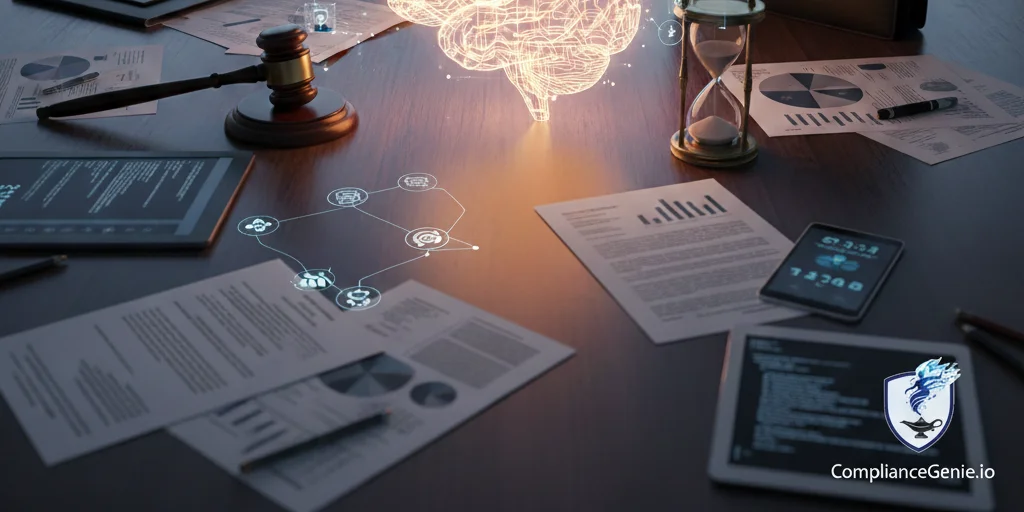
The Rise of AI Assurance: Internal Audit, Independent Oversight, and Board Engagement
The Rise of AI Assurance: Internal Audit, Independent Oversight, and Board Engagement
Introduction: Why Boards and Audit Committees Now See AI as High-Risk
In just a few years, AI has moved from the innovation lab to the boardroom agenda. For directors and audit committees, AI isn’t just an opportunity—it’s a material risk.
- Bias in hiring algorithms can lead to lawsuits.
- Errors in credit decision models can attract regulatory fines.
- A generative AI data leak can cause reputational damage overnight.
Boards and auditors have seen this pattern before: cybersecurity followed the same trajectory, moving from technical issue to top governance priority. Today, AI assurance is following suit.
Internal Audit Role: Embedding AI Into Audit Charters
Forward-thinking organizations are expanding the scope of internal audit to cover AI. This means:
- Risk-based reviews: Evaluating AI systems for compliance with internal policies and external regulations.
- Lifecycle audits: Reviewing AI design, testing, deployment, and monitoring processes.
- Control effectiveness: Testing bias detection, access controls, and model monitoring as standard audit checkpoints.
- Advisory role: Helping AI project teams identify risks early, not just flagging them after deployment.
By embedding AI into audit charters, organizations create independent oversight within their governance structures.
Independent Assurance: Third-Party Reviews and Certifications
Internal audit is powerful, but external validation builds trust with regulators, investors, and customers.
- Third-party AI audits: Independent firms evaluate fairness, transparency, and robustness of AI models.
- ISO/IEC 42001 certification: The first certifiable AI governance standard (published 2023) is already being used to demonstrate maturity.
- Sector-specific checks: Financial services firms are adapting model risk management frameworks (like SR 11-7 in the U.S.) for AI.
Case in point: Autodesk announced ISO 42001 certification in 2025, tying it to their “Trusted AI” program. This signaled to partners and regulators that AI risks were being actively governed, not just acknowledged.
Board Accountability: Engaging Leadership in AI Oversight
AI assurance doesn’t stop at audit—it extends to the boardroom.
- Board training: Directors are being briefed on AI risks and regulations to improve decision-making.
- Oversight committees: Boards are adding AI to the remit of audit or risk committees.
- Regular reporting: CISOs, CCOs, and Chief AI Ethics Officers present updates on AI risk posture.
- Risk appetite discussions: Boards debate how much decision-making authority can safely be delegated to AI.
This engagement ensures AI is governed at the highest level—mirroring the board’s role in cybersecurity and financial reporting.
Case Studies: What Leading Enterprises Are Doing
- EY Survey (2025): Found CEOs more concerned about AI risk controls than their peers, highlighting leadership focus.
- Autodesk: Achieved ISO 42001 certification, embedding human oversight, fairness testing, and regular audits.
- PwC Guidance: Urges internal auditors to provide independent assurance on AI governance and advise management on improvements.
These examples show that AI assurance isn’t theoretical—it’s being operationalized now.
Conclusion: Assurance = Trust = Competitive Advantage
AI is becoming mission-critical infrastructure. To safeguard its use, enterprises must assure stakeholders that AI systems are fair, transparent, secure, and compliant.
Internal audit provides independent internal oversight. Third-party assurance builds external trust. Boards set the tone from the top. Together, they create a governance ecosystem that reduces risk and strengthens confidence.
The result isn’t just compliance—it’s competitive differentiation. Organizations that demonstrate trustworthy AI will attract customers, investors, and regulators’ confidence, while laggards risk penalties and reputational damage.
✅ Next in this series: We’ll look outward, examining how enterprises are managing third-party and supply chain AI risks—from AI Bills of Materials to vendor contracts and ongoing monitoring.